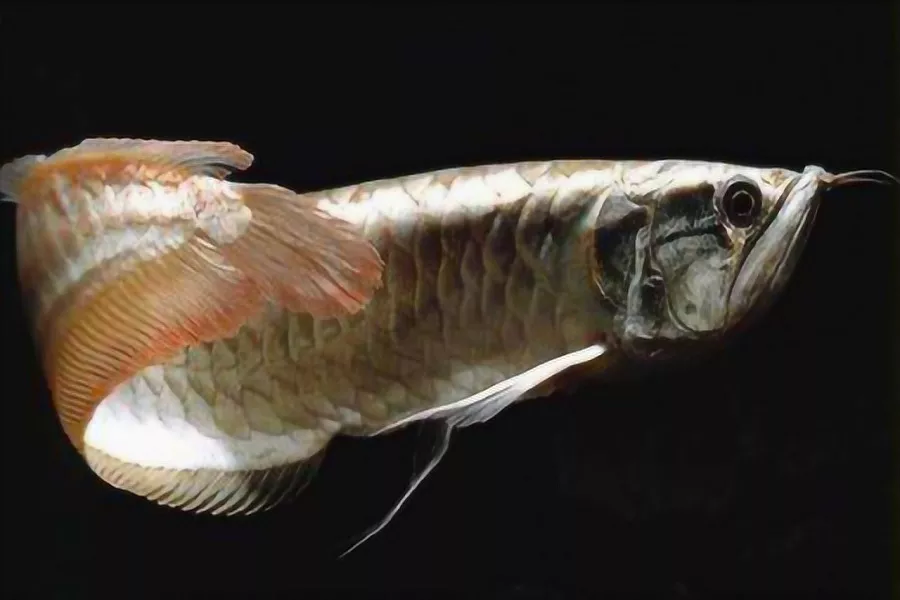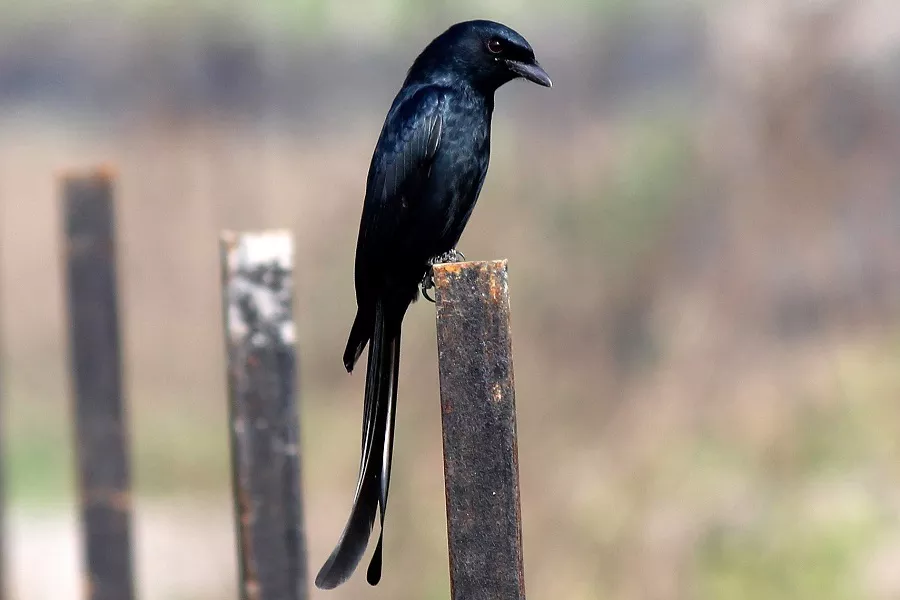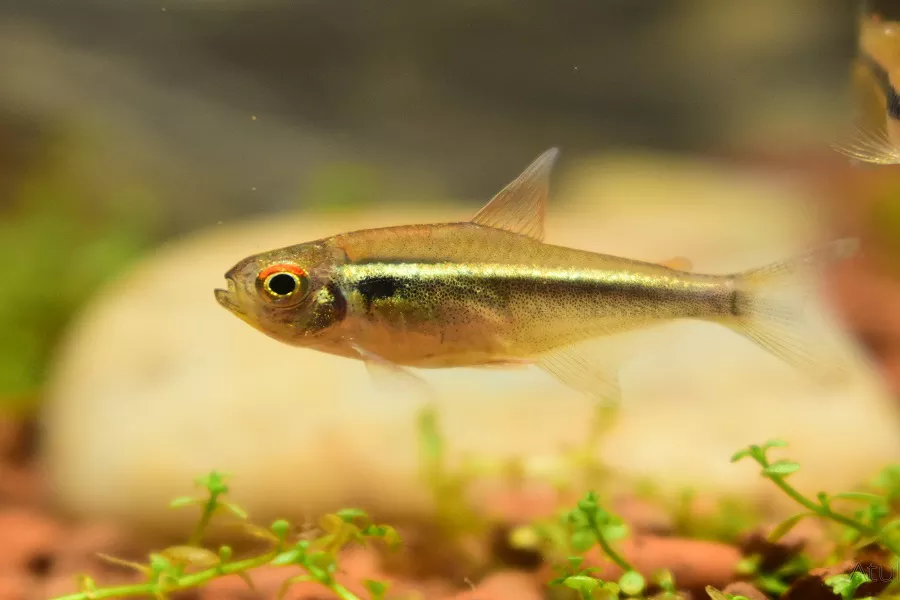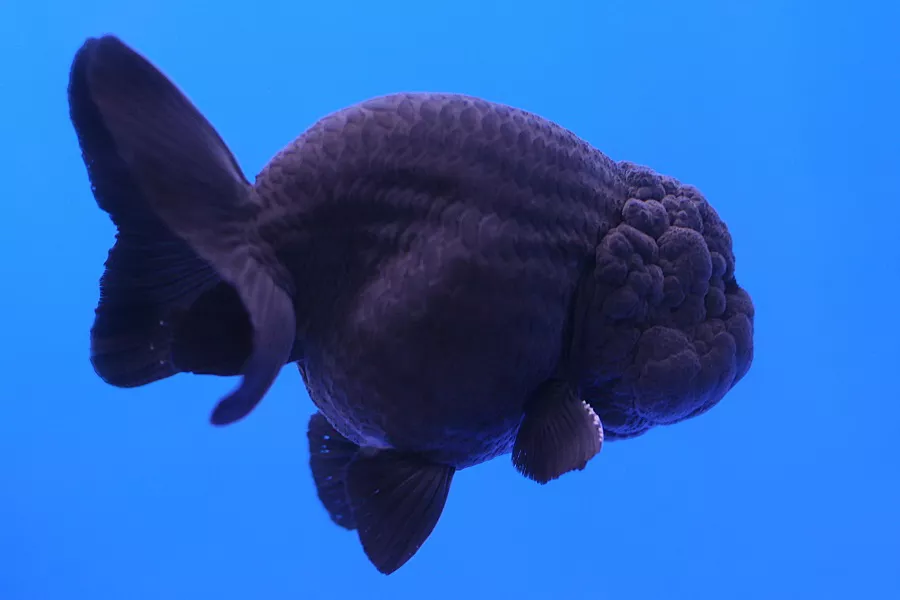What is black dragonfish?
Black bone tongue fish (scientific name: Osteoglossum ferreirai): also known as “black dragon fish”. The general body length is 80 cm, the weight is 400-600 grams, and the largest individual can be up to 1 meter long. Body elongated, laterally flattened. On the side of the mouth. A pair of kisses. The shape is almost the same as that of the silver dragon fish. The adult fish is silver, but when the body grows up, it will tend to be black with purple and cyan, and there are gold bands. Very ornamental value. Juveniles have obvious black body lines and yolk sacs hanging under their pectoral fins, so Hong Kong people call them black dragon spit beads.
According to the region, it belongs to the American dragon fish. It was discovered in the Rio Negro in 1966, and its origin is the Rio Negro valley. It is indirectly related to the name of the river, and the reason why it is “black” is that in order not to be attacked by other fish in the river, the black arowana put on a black protective color for itself when it was a juvenile. Living in tropical rivers and lakes, it likes tranquility, and usually swims in an environment overgrown with water and grass. Sexual maturity at 6-8 years of age.
What does a black dragonfish look like?
Black tongue fish is a medium to large freshwater fish. The body size is very similar to that of the biloba. The general body length is 80 cm, the weight is 400-600 grams, and the largest individual can be up to 1 meter long. Body elongated, laterally flattened. On the side of the mouth. A pair of kisses. The head and operculum have large plate-like skeletons that are honeycomb-shaped and can be used to breathe outside air. The dorsal and anal fins are long and located behind the body. Large pectoral fins. The pelvic fins are located behind the pectoral fins. The caudal fin is short. The body is covered with large scales, which are pink semicircular in shape. Juveniles have a tan-grey to dark-brown back and dark-brown flanks, with broad stripes from the operculum to the tip of the caudal fin. The head is silver-brown with dark-brown stripes, passing through the eyes and the opening of the first gill. The gill area is marked with a dark-brown longitudinal stripe similar to that of Bonefish, the pelvic fins are silver, and the other fins are brown-black. Anal and dorsal fins are orange with white borders.
The body shape of the black-bone tongue fish is similar to that of the silver arowana, and it is very different from the body shape of the golden arowana and the red arowana. Its body shape is flat and slender, the tail is band-shaped, the dorsal and anal fins are band-shaped and extend back to the fan-shaped tail. The yellow horizontal band runs from the tentacles of the dragon fish across the eyes to the tail, and there will also be a yellow vertical band behind its operculum, which is very conspicuous. This is the most obvious and unique mark on the black tongue fish. As the black tongue fish grows slowly, the black color will gradually fade. At 10 cm, light yellow stripes will appear on the body, and the silvery white brilliance will gradually appear, and the beauty of the black tongue tongue fish will begin. slowly unfolded. The fins of the black tongue fish will turn dark blue, and the longer they grow larger, the darker the fins will become, turning into dark colors such as black and purple. In good quality black tongue fish, the anal and dorsal fins will appear red. The combination of black and red and black and blue makes the black tongue fish unique in its beauty. The dark tones of the black tongue tongue fish and the agile eyes make fish lovers indulge in it.
There is also a variant of the black tongue fish, the platinum individual, which is a very precious individual. Its special features are that the body color turns white as the arowana grows, and the three fins have a blue-black metallic luster.
black dragonfish living habits
Living in tropical rivers and lakes, it likes tranquility, and usually swims in an environment overgrown with water and grass. Except for the silver arowana, the temperament of the dragon fish is more fierce and neurotic, especially the black bone tongue fish, which is more neurotic, and its physique is also weak. If the bone tongue fish is in a condition, if it is not handled properly, it will be inevitable to get sick. Therefore, when raising black tongue fish, we must pay attention to the water quality and feeding of black tongue tongue fish. If there are pets such as cats or dogs at home, we must pay attention to avoid scaring the dragon fish.
black dragonfish rearing
The environment for raising black tongue fish is more important. It is recommended to control the temperature of the raising water at 24-28°C, and use weakly acidic to neutral soft water. Black tongue fish have no requirements for aquarium landscaping, but provide them with a relatively quiet environment.
The lamps have various spectrums of light, which are very beneficial to the health of the dragon fish. Of course, you can also use the lamp specially designed by the manufacturer for the dragon fish. Under the light, the surface of the dragon fish will emit a faint red light, which is very beautiful. At the same time, this light tube also has all the spectrum required for the growth of arowana, which is very beneficial to the growth of arowana.
The black tongue fish is larger, and the aquarium length should be more than 120 cm. At the same time, ultraviolet sterilization should be installed to prevent the occurrence of diseases. The aquarium must be equipped with an air pump, which can not only increase the dissolved oxygen in the water, but also drive out the high concentration of carbon dioxide in the water. In order to prevent the arowana from jumping to the surface when frightened, the aquarium must also be covered. The water quality in the aquarium should be changed at least once every three days, and the amount of water exchanged each time should be 1/4 to 1/3.
Reminder: For more knowledge about tiger fish, arowana, australian lungfish, please pay attention to: mtedr.com, to provide you with types of aquarium fish and fish care.


























